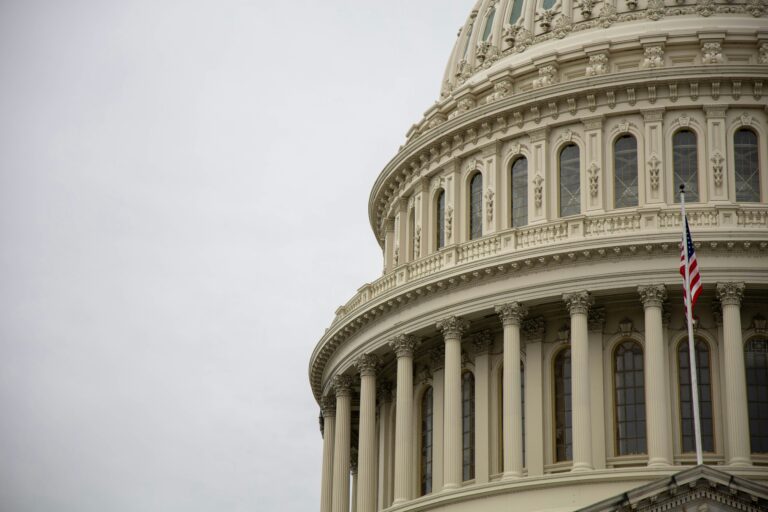
Introduction
The power of collective action has been demonstrated throughout history, with different groups and organizations coming together to achieve common political goals. Coalition-building is an essential strategy in politics, allowing diverse groups to pool their resources, share their expertise, and amplify their voices. By uniting around a shared cause, coalitions have the ability to drive significant political and social change. In this article, we will examine how coalitions are formed, their effectiveness in achieving political goals, and provide examples of successful coalition-building efforts that have shaped the political landscape.
The Importance of Coalition-Building
Coalition-building is a critical strategy for groups that may not have enough power or influence on their own to achieve their goals. By forming alliances, organizations can broaden their base of support, increase their legitimacy, and leverage the strengths of each member group. Coalitions are often formed when groups with different backgrounds, interests, or expertise realize that they have a common goal that can be better achieved together.
In politics, coalitions can be formed at various levels—local, national, or even international—and can involve different types of stakeholders, including non-profit organizations, labor unions, grassroots movements, political parties, and community groups. Building coalitions requires negotiation, compromise, and a willingness to work together for the greater good, despite differences that may exist among the members.
Strategies for Successful Coalition-Building
- Identifying Common Goals: The foundation of any successful coalition is a shared goal or objective. It is crucial for coalition members to identify and agree on a clear, common purpose that all members are committed to achieving. This shared goal serves as the unifying factor that brings diverse groups together and keeps them focused on the bigger picture.
- Inclusive Leadership: Effective coalitions require inclusive leadership that encourages collaboration, values different perspectives, and ensures that all members have a voice in decision-making. Inclusive leadership helps build trust among coalition members and fosters a sense of ownership and commitment to the coalition’s goals.
- Leveraging Strengths: Each coalition member brings unique strengths, resources, and expertise to the table. Successful coalitions are those that recognize and leverage the strengths of each member to maximize their collective impact. For example, one group may have strong grassroots organizing capabilities, while another may have access to policymakers or media connections.
- Building Trust and Communication: Trust is a crucial component of coalition-building. Members must trust each other to work towards the common goal and be transparent in their actions. Open communication is essential to address any potential conflicts, share information, and make collective decisions. Regular meetings, clear communication channels, and transparency in decision-making processes are key to building and maintaining trust.
- Flexibility and Adaptability: Coalitions often involve groups with differing priorities and interests, and achieving the coalition’s goals may require compromise. Successful coalitions are those that remain flexible and adaptable, adjusting their strategies as needed while staying focused on the common goal.
Examples of Successful Coalition-Building
- Civil Rights Movement (United States): The Civil Rights Movement in the United States is one of the most well-known examples of successful coalition-building. During the 1950s and 1960s, a diverse group of organizations—including the Southern Christian Leadership Conference (SCLC), the Student Nonviolent Coordinating Committee (SNCC), and the NAACP—came together to fight for racial equality and an end to segregation. These organizations, despite having different approaches and strategies, worked together to organize protests, marches, and campaigns that ultimately led to landmark legislation like the Civil Rights Act of 1964 and the Voting Rights Act of 1965. The coalition’s success was largely due to its ability to unite around a shared goal of achieving civil rights for all Americans.
- United Democratic Front (South Africa): During the 1980s, the United Democratic Front (UDF) was formed as a coalition of over 400 organizations—including trade unions, student groups, and religious organizations—to oppose apartheid in South Africa. The UDF played a crucial role in mobilizing mass resistance against the apartheid regime, organizing protests, strikes, and boycotts. The coalition’s diverse membership allowed it to build a broad base of support across different communities and put significant pressure on the government to end apartheid. The UDF’s efforts, combined with international pressure, ultimately contributed to the dismantling of apartheid and the establishment of a democratic government in South Africa.
- Environmental Justice Movement: The Environmental Justice Movement in the United States is an example of how coalition-building can address the intersection of environmental and social issues. This movement emerged in response to the disproportionate impact of environmental hazards on low-income communities and communities of color. Organizations focused on civil rights, environmental protection, and public health came together to advocate for policies that address environmental inequalities. By building coalitions that included grassroots community groups, environmental organizations, and public health advocates, the movement was able to bring attention to environmental justice issues and push for policy changes at the local, state, and national levels.
- Marriage Equality Campaign (United States): The campaign for marriage equality in the United States is another example of successful coalition-building. LGBTQ+ rights organizations, such as the Human Rights Campaign (HRC), Freedom to Marry, and GLAAD, formed coalitions with civil rights groups, labor unions, and supportive faith organizations to advocate for the legalization of same-sex marriage. By building broad-based support and framing marriage equality as a matter of civil rights, the coalition was able to shift public opinion and gain political support. The campaign’s efforts culminated in the landmark Supreme Court ruling in 2015 that legalized same-sex marriage nationwide.
- Make Poverty History (Global): Make Poverty History was a global coalition of non-governmental organizations, trade unions, and faith-based groups that came together in the early 2000s to advocate for the eradication of extreme poverty. The coalition aimed to put pressure on world leaders to take action on issues such as debt relief, fair trade, and increased aid to developing countries. The coalition’s efforts, which included large-scale public mobilizations, lobbying, and media campaigns, were instrumental in raising awareness about global poverty and influencing policy changes, including debt cancellation for some of the world’s poorest countries.
The Power of Collective Action
How to Build a Successful Coalition: Step-by-Step Guide
- Define a Clear Common Goal: Start by identifying a specific, shared goal that all coalition members can rally around. This goal should be well-defined, achievable, and something that all participants are committed to pursuing. The common goal will serve as the foundation of your coalition and guide all actions taken by the group.
- Identify Potential Partners: Determine which groups, organizations, or individuals share your goal and would be valuable partners. Consider the strengths, resources, and expertise that each potential partner could bring to the coalition. Look for groups that complement your strengths and can help fill any gaps in expertise or resources.
- Establish Roles and Responsibilities: Once you have formed your coalition, establish clear roles and responsibilities for each member group. Define how decisions will be made, who will be responsible for specific tasks, and how progress will be tracked. This helps ensure that everyone knows what is expected of them and that the coalition operates smoothly.
- Develop a Communication Plan: Effective communication is key to maintaining trust and collaboration within the coalition. Develop a communication plan that includes regular meetings, updates, and open channels for feedback. Ensure that all members are informed and engaged throughout the process, and address any conflicts or issues as they arise.
- Leverage Each Partner’s Strengths: Identify the unique strengths of each coalition member and find ways to leverage them. For example, one group may have strong grassroots organizing capabilities, while another may have connections with policymakers. By capitalizing on each member’s strengths, the coalition can maximize its impact.
- Create a Shared Strategy and Action Plan: Develop a strategic plan that outlines the actions the coalition will take to achieve its goal. This plan should include specific steps, timelines, and key milestones. Ensure that all members are involved in the planning process and that the strategy aligns with the coalition’s overall goal.
- Build Public Support: Successful coalitions often rely on broad public support to achieve their goals. Use media, social media, and public events to raise awareness about the coalition’s mission and build momentum. Engage with the community to gather support and amplify the coalition’s message.
- Be Flexible and Adapt: Coalitions often face unexpected challenges or changes in circumstances. Be prepared to adapt your strategies and plans as needed, while staying focused on the shared goal. Flexibility is crucial for maintaining momentum and overcoming obstacles.
- Evaluate Progress and Celebrate Successes: Regularly evaluate the progress of the coalition towards achieving its goal. Identify what is working well and what may need adjustment. Celebrate successes, both big and small, to maintain morale and motivate coalition members to continue their efforts.
- Sustain the Coalition: Consider how the coalition can sustain its work beyond the initial goal. Establish structures for continued collaboration, identify future opportunities for collective action, and ensure that relationships built during the coalition-building process are maintained.
The examples above demonstrate the power of collective action in achieving political and social change. By bringing together diverse groups with different strengths and perspectives, coalitions can build broad-based support, amplify their message, and create the momentum needed to influence policymakers and drive change. The success of coalitions often depends on their ability to navigate differences, build trust, and stay focused on their shared goals.
Coalition-building is not without its challenges. Differences in priorities, strategies, and organizational cultures can create tensions within a coalition. However, the ability to overcome these challenges and work together for a common cause is what makes coalition-building such a powerful tool for change. By leveraging the strengths of each member, coalitions can achieve far more than any individual group could accomplish on its own.
Conclusion
Building coalitions is a powerful strategy for achieving political and social change. By uniting around a shared goal, diverse groups can amplify their voices, pool their resources, and create the momentum needed to influence policy and drive meaningful change. The examples of successful coalition-building efforts, from the Civil Rights Movement to the campaign for marriage equality, highlight the importance of collective action in shaping the political landscape. As we face complex challenges in the 21st century, the power of coalition-building will continue to be an essential tool for creating a more just and equitable world.



